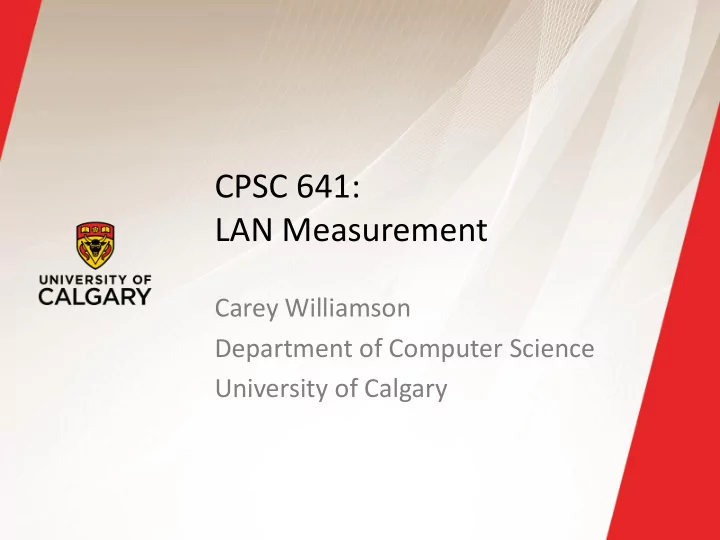

CPSC 641: LAN Measurement Carey Williamson Department of Computer Science University of Calgary
LAN Traffic Measurements Some of the first network traffic measurement papers were for measurements done on Ethernet local area networks (LAN’s) We will look at one such example: Riccardo Gusella, ‘‘A Measurement Study of Diskless Workstation Traffic on an Ethernet Local Area Network”, 1988
Overview Studied UC Berkeley campus LAN environment Medium size Ethernet LAN About 100 workstations Consists of file servers, diskless workstations
Measurement Methodology Dedicated VAX 8600 for data collection — 32 MB RAM — Dual buffering strategy (memory to disk to tape) — Microsecond resolution for timestamps — Less than 1% packet loss Highly detailed and accurate study — Three weeks of trace collection — 6.5 Gigabytes of trace data — Detailed protocol information extracted from traces Paper reports for 24-hour period (11.8 M pkts)
Main Observations Average Ethernet utilization is higher than that reported in earlier studies Traffic patterns highly skewed Single workstations can dominate Packet size distribution bimodal Definite spikes in interarrival times Packet arrival rate varies a lot (bursty)
Per Protocol Analysis One of the novel aspects of Gusella’s work was a complete breakdown of the results by protocol type (e.g., TCP, UDP, NFS, ND) Able to identify characteristics in traffic that can be linked to specific protocols and/or machines Possible because of high resolution timestamps and complete protocol info
Summary Gusella’s work was one of the first detailed studies of Ethernet LAN traffic Had excellent measurement tools, high resolution timers, lots of storage Identified traffic characteristics common to most campus LAN environments Identified impact of new workstation technologies, protocols, applications on network load
Recommend
More recommend